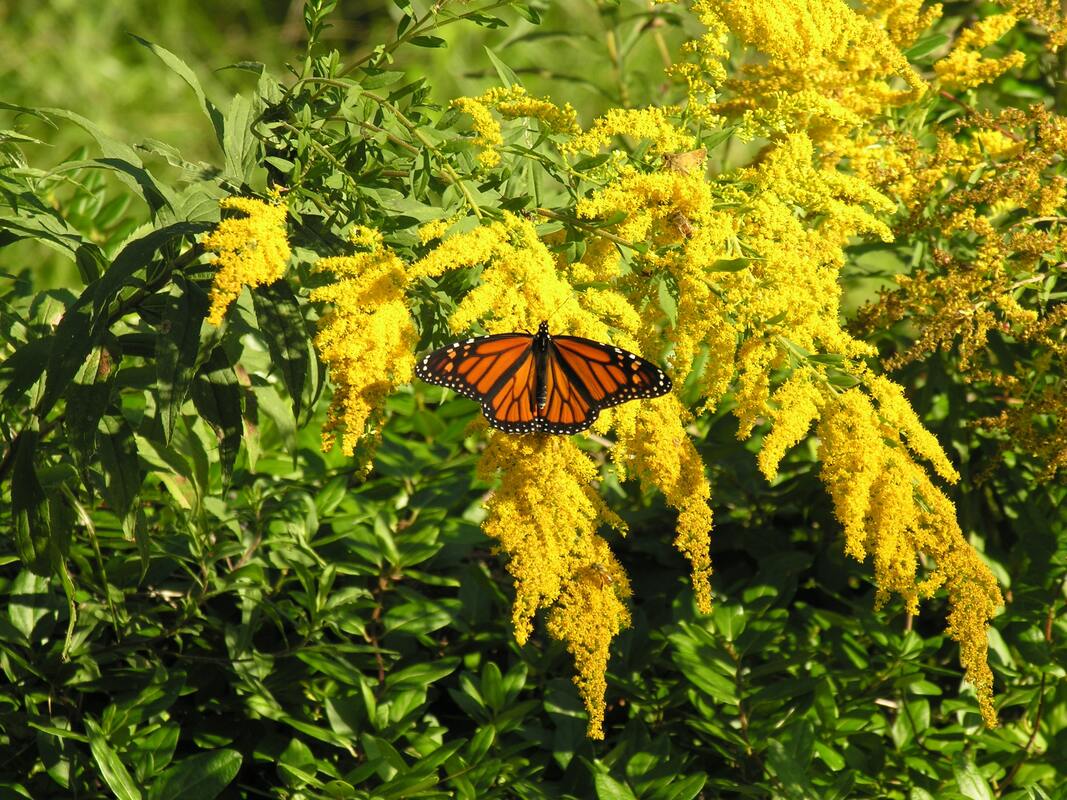|
Planting with Purpose - Using Keystone Native Plants Isn’t it fascinating to sit and watch butterflies flit from flower to flower? One of the most memorable moments of mine was at the Rotary Gardens in Janesville in the Children’s Garden. Movement filled the entire stretch of the zinnia border - it was a butterfly haven! It was magical and spellbinding. I could have stood there for hours mesmerized. And I’m not the only one. The ‘planting for pollinator’ movement is growing with 1 out of 4 Americans purchasing plants specifically to attract pollinators in 2021. This leads to the next question: do certain plants attract more pollinators than others? To answer that, we need to take a step back and begin with the caterpillars. They support our food web and native plants, in turn, support them. In fact 14% of our native plants support 90% of the various butterfly and moth species! This tells us that not all native plants are created equal. The ‘key’ is to use keystone plants - those that attract the most species of caterpillars. And from there, we can dig even deeper into the keystone native plants that are native to our specific area. Here in Southeastern Wisconsin, we are part of the Eastern Temperate Forest ecoregion. Keystone native plants for our ecoregion fall into two categories: those that are host plants supporting caterpillars of butterflies and moths, and those that also provide pollen for the native bee population both specialists and generalists. The top caterpillar-supporting keystone trees for us to add to our landscapes are:
Compare that with a tree like Stewartia, which is a beautiful tree, but only supports one type of caterpillar species. The top two keystone native shrubs that support both caterpillars and provide pollen for native bees:
We know the importance of incorporating natives into our personal habitats, but can you see how this added information can influence our native plant purchases so we are planting even more intentionally and more effectively? It’s extremely exciting! You can learn more at nwf.org/keystoneplants where this data was taken from. Also consider joining our virtual discussion on this topic coming up in March (see below). Keep the movement going by planting natives which benefits all of us. Happy growing! Tracy Hankwitz is a horticulture adjunct for Gateway Technical College and owner of Bella Botanica LLC located in Springfield, WI. Explore this topic further by joining her for a free monthly virtual gardening discussion on Wednesday, March 9 at 6:30 pm. Register here.
0 Comments
|
AuthorHi, I'm Tracy - horticulturist, beauty-seeker, Word-lover, and blessed to be the owner of Bella Botanica. I also love to write about plants, gardening, and about my faith journey. Thanks for reading! Archives
March 2024
Categories
All
|


 RSS Feed
RSS Feed